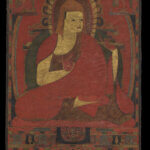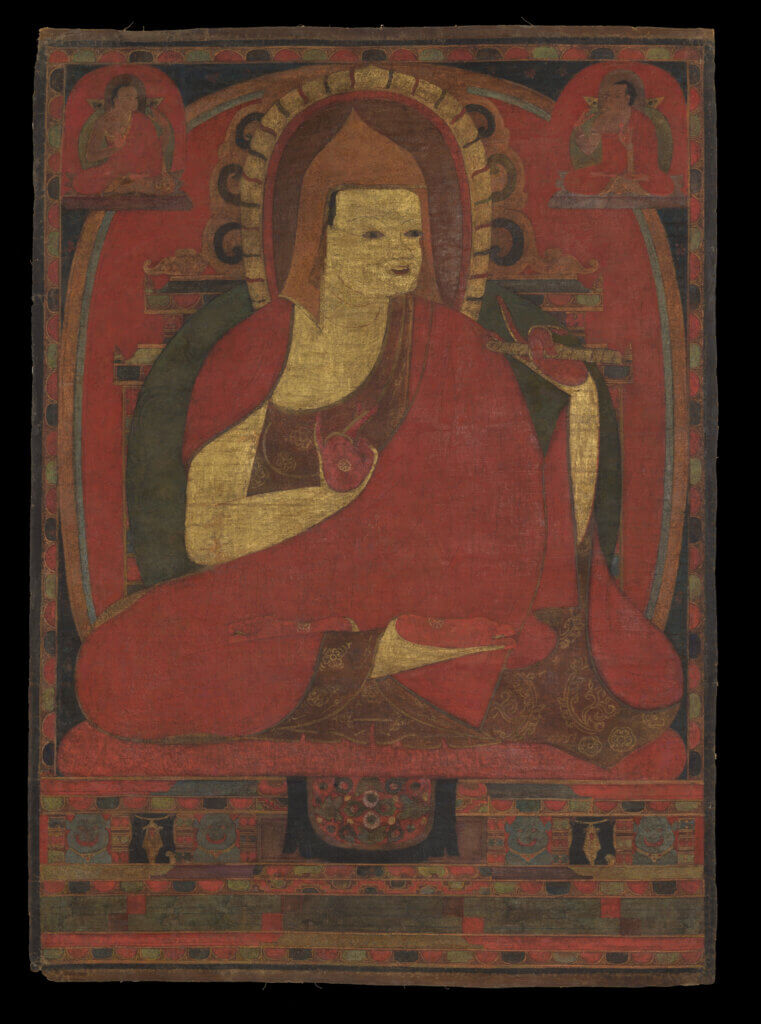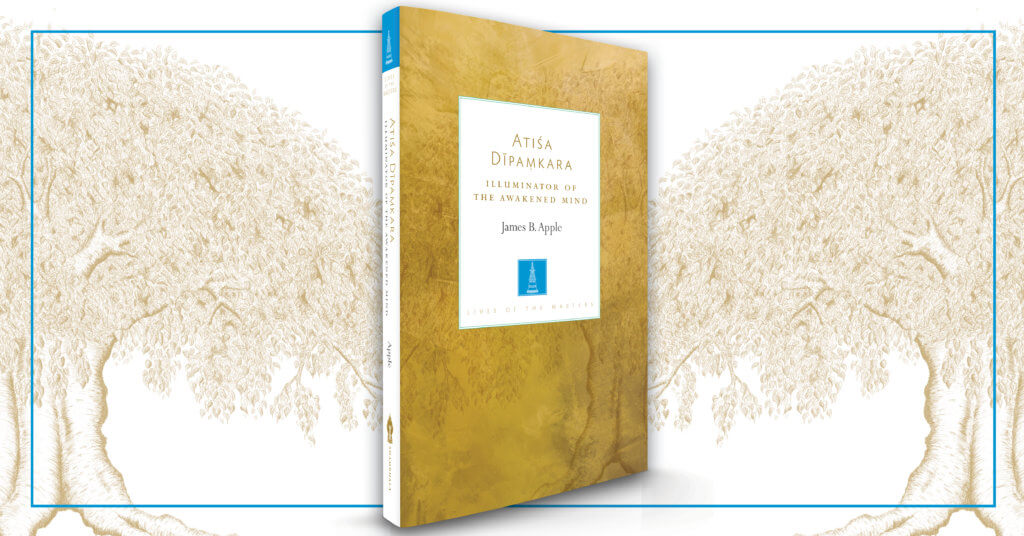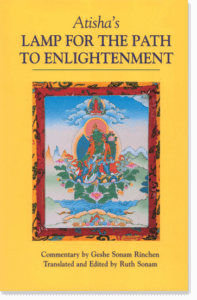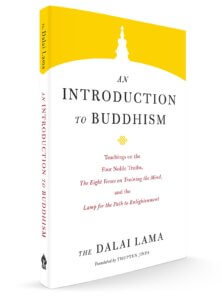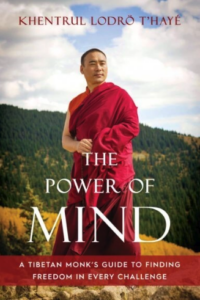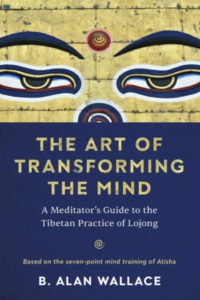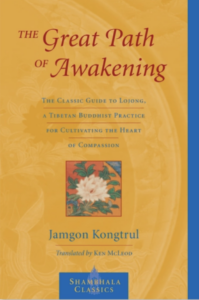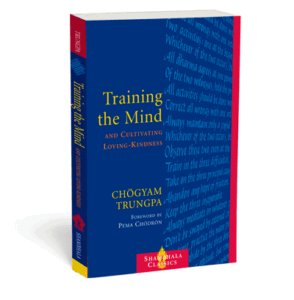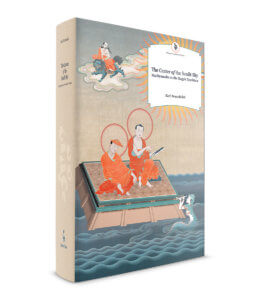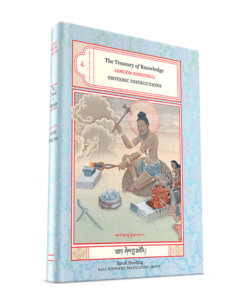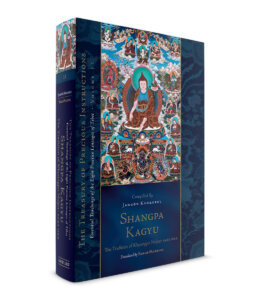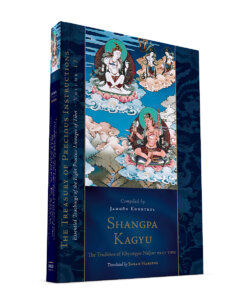The Life of Atiśa Dīpankara Śrījñāna (982–1054 CE)
Atīśa Dīpaṃkara Śrījñāna, was an eleventh-century Indian Buddhist scholar and saint who came to Tibet at the invitation of the king of Western Tibet, Lha Lama Yeshe Wo, and his nephew, Jangchub Wo. His coming initiated the period of the second transmission of Buddhism to Tibet, formative for the Sakya, Kagyu and Gelug traditions of Tibetan Buddhism. His chief disciple Dromtön went on to found the Kadampa tradition. Atisha's most celebrated text, Lamp for the Path to Enlightenment, sets forth the entire Buddhist path within the framework of three levels of motivation on the part of the practitioner. Atisha's text thus became the source of the lamrim tradition, or graduated stages of the path to enlightenment, an approach to spiritual practice incorporated within all schools of Tibetan Buddhism.
"Atiśa’s life and teachings are a Tibetan story, and what an amazing story it is. Atiśa’s life is guided by dreams, visions, and pre-dictions from buddhas and bodhisattvas, including the savioress Tārā. In the story of Atiśa’s life, we enter a world of gold, sailing ships, palm leaf manuscripts, and mantras, rather than credit cards, automobiles, social media, and cell phones. The story involves transactions in over two million dollars’ worth of gold and travels throughout maritime Buddhist Asia. The Tibetans have faithfully preserved what is known of Atiśa Dīpaṃkaraśrījñāna, the vicissitudes of his life, the struggles in his travels, and the spirit and meaning of his teachings."
—James B. Apple, from the Preface to Atisa Dipamkara: Illuminator of the Awakened

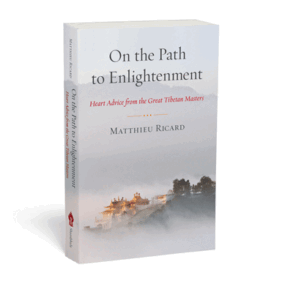
Paperback | Ebook
$22.95 - Paperback
On the Path to Enlightenment
Heart Advice from the Great Tibetan Masters
By Matthieu Ricard
Dilgo Khyentse Rinpoche inspired Matthieu Ricard to create this anthology by telling him that “when we come to appreciate the depth of the view of the eight great traditions [of Tibetan Buddhism] and also see that they all lead to the same goal without contradicting each other, we think, ‘Only ignorance can lead us to adopt a sectarian view.’” Ricard has selected and translated some of the most profound and inspiring teachings from across these traditions.
The selected teachings are taken from the sources of the traditions, including the Buddha himself, Nagarjuna, Guru Rinpoche, Atisha, Shantideva, and Asanga; from great masters of the past, including Thogme Zangpo, the Fifth Dalai Lama, Milarepa, Longchenpa, and Sakya Pandita; and from contemporary masters, including the Fourteenth Dalai Lama and Mingyur Rinpoche. They address such topics as the nature of the mind; the foundations of taking refuge, generating altruistic compassion, acquiring merit, and following a teacher; view, meditation, and action; and how to remove obstacles and make progress on the path.

Atisha's Lamp for the Path of Awakening (Bodhipathapradīpa)
The Lamp for the Path of Awakening is Atisha's most famous treatise which provided the foundation for the lamrim, or the "graded path," tradition of which all the schools (specifically Kadampa and Gelug) subsequently adopted.
Paperback | Ebook
$19.95 - Paperback
Atisha's Lamp for the Path to Enlightenment
With Commentary by Geshe Sonam Rinchen
Edited and translated by Ruth Sonam
Atisha's most celebrated text, Lamp for the Path to Enlightenment, sets forth the entire Buddhist path within the framework of three levels of motivation on the part of the practitioner. Atisha's text thus became the source of the lamrim tradition, or graduated stages of the path to enlightenment, an approach to spiritual practice incorporated within all schools of Tibetan Buddhism.
"Geshe Sonam Rinchen's lucid and engaging commentary draws out Atisha's meaning for today's practitioners with warmth and wit, bringing the light of this age-old wisdom into the modern world."—Indian International Journal of Buddhist Studies
Paperback| Ebook
$16.95 - Paperback
An Introduction to Buddhism
Teachings on the Four Noble Truths, The Eight Verses on Training the Mind, and the Lamp for the Path to Enlightenment
By H.H. the Fourteenth Dalai Lama
This classic collection of texts on the meditation practice and theory of Dzogchen presents the Great Perfection through the writings of its supreme authority, the fourteenth-century Tibetan scholar and visionary Longchen Rabjam. The pinnacle of Vajrayana practice in the Nyingma tradition of Tibetan Buddhism, Dzogchen embodies a system of training that awakens the intrinsic nature of the mind to reveal its original essence, utterly perfect and free from all duality—buddha nature, or buddhahood itself.
In The Practice of Dzogchen, Tulku Thondup translates essential passages from Longchen Rabjam’s voluminous writings to illuminate and clarify this teaching. He also draws on the works of later masters of the tradition, placing Dzogchen in context both in relation to other schools of Buddhism and in relation to the nine-vehicle outline of the Buddhist path described in the Nyingma tradition. This expanded edition includes Counsel for Liberation, Longchenpa’s poetic exhortation to readers to quickly enter the path of liberation, the first step toward the summit of Dzogchen practice.
This book was previously published under the title Lighting the Way.
See more from The Core Teachings of the Dalai Lama series
Atisha and the tradition of Lojong, "Mind Training"
Paperback | Ebook
$18.95 - Paperback
The Power of Mind
A Tibetan Monk's Guide to Finding Freedom in Every Challenge
By Khentrul Lodro T'haye and translated by Paloma Lopez Landry
We’ve all heard platitudes about cultivating love and compassion, but how can we really develop these qualities in ourselves and—crucially—share them in our world? The Power of Mind provides a proven path.
Khentrul Rinpoche teaches that regardless of what’s unfolding in our lives, our route to freedom lies in our minds—and how we work with them. A thousand years ago, the Indian saint Atisha endured great hardship to bring the Buddha’s teachings to Tibet, where they flourished. This book introduces a primary text that emerged—the Seven Key Points of Mind Training.
Paperback | Ebook
$24.95 - Paperback
The Art of Transforming the Mind
A Meditator's Guide to the Tibetan Practice of Lojong
By B. Alan Wallace
The purpose of lojong, a traditional Mahayana Buddhist practice of training the mind, is about transforming one’s attitude and expanding one’s sense of self to encompass the greater whole. In this modern presentation of lojong practice and Atisha’s Seven-Point Mind Training, author, translator, and Buddhist practitioner B. Alan Wallace gives readers a framework from which they may cultivate the qualities of loving-kindness, compassion, and insight while diminishing harmful habits and ways of thinking. “All of us have attitudes,” Wallace explains, and “attitudes need adjusting.” The practice of lojong is therefore presented as a method to shift our attitude away from our problems, anxieties, hopes, and fears toward an expansive sense of joy and well-being that springs from the very essence of Mahayana—bodhichitta.
Includes three new translations of Atisha’s source material including Pith Instructions on a Single Mindfulness and Pith Instructions on the Middle Way.
Paperback | Ebook
$21.95 - Paperback
The Intelligent Heart
A Guide to a Compassionate Life
By Dzigar Kongtrul
Compassion arises naturally when one comes to perceive the lack of solid distinction between self and other. The Buddhist practice known as tonglen—in which one consciously exchanges self for other—is a skillful method for getting to that truthful perception. In this, his commentary on the renowned Tibetan lojong (mind training) text the Seven Points of Mind Training, Dzigar Kongtrul reveals tonglen to be the true heart and essence of all mind-training practices. He shows how to train the mind in a way that infuses every moment of life with uncontrived kindness toward all.
Classics of Lojong, "Mind Training"
One of the more prominent texts on lojong from the 19th century is Jamgon Kongtrul's The Great Path of Awakening. This text is from a collection of texts known as The Five Treasuries in which Kongtrul embraces the Ri-me (non-sectarian) impulse of the 19th century. Along with a number of teachers including Khyentse Wangpo, Dza Patrul, and Chokgyur Lingpa, Kongtrul aimed to preserve rare teachings and to re-emphasize practicing dharma in everyday life. His presentation of The Seven Points of Mind Training both preserves Tibet's incredible history and illuminates the practice of lojong for his generation and generations to come. There are a number of modern commentaries that continue in the tradition of Kongtrul's commentary on lojong and the tradition of Atisha including Pema Chödron's Start Where You Are and Chögyam Trungpa Rinpoche's Training the Mind and Cultivating Loving-Kindness. It goes without saying, it is because of great texts like The Great Path of Awakening that the tradition of lojong continues to inspire teachers and practitioners today.
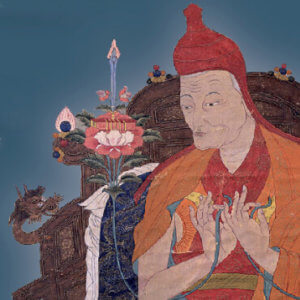
Paperback
$16.95 - Paperback
The Great Path of Awakening
The Classic Guide to Lojong, A Tibetan Practice for Cultivating the Heart of Compassion
By Jamgon Kongtrul Lodro Taye and translated by Ken McLeod
Here is a practical Buddhist guidebook that offers techniques for developing a truly compassionate heart in the midst of everyday life. For centuries, Tibetans have used fifty-nine pithy slogans—such as "A joyous state of mind is a constant support" and "Don't talk about others' shortcomings"—as a means to awaken kindness, gentleness, and compassion. While Tibetan Buddhists have long valued these slogans, recently they have become popular in the West due to such books as Start Where You Are by Pema Chödrön and Training the Mind by Chögyam Trungpa.
This edition of The Great Path of Awakening contains an accessible, newly revised translation of the slogans from the famous text The Seven Points of Mind Training. It also includes illuminating commentary from Jamgon Kongtrul that provides further instruction on how to meet every situation with intelligence and an open heart.
Paperback | Ebook
$19.95 - Paperback
Start Where you Are
A Guide to Compassionate Living
By Pema Chödron
We all want to be fearless, joyful, and fully alive. And we all know that it’s not so easy. We’re bombarded every day with false promises of ways to make our lives better—buy this, go here, eat this, don’t do that; the list goes on and on. But Pema Chödrön shows that, until we get to the heart of who we are and really make friends with ourselves, everything we do will always be superficial. Here she offers down-to-earth guidance on how we can go beyond the fleeting attempts to “fix” our pain and, instead, to take our lives as they are as the only path to achieve what we all yearn for most deeply—to embrace rather than deny the difficulties of our lives. These teachings, framed around fifty-nine traditional Tibetan Buddhist maxims, point us directly to our own hearts and minds, such as “Always meditate on whatever provokes resentment,” “Be grateful to everyone,” and “Don’t expect applause.” By working with these slogans as everyday meditations, Start Where You Are shows how we can all develop the courage to work with our own inner pain and discover true joy, holistic well-being, and unshakeable confidence.
Includes the Root Text of the Seven Points of Training the Mind, by Chekawa Yeshe Dorje
Paperback | Ebook
$16.95 - Paperback
Warning: Using this book could be hazardous to your ego! The slogans it contains are designed to awaken the heart and cultivate love and kindness toward others. They are revolutionary in that practicing them fosters abandonment of personal territory in relating to others and in understanding the world as it is.
The fifty-nine provocative slogans presented here—each with a commentary by the Tibetan meditation master Chögyam Trungpa—have been used by Tibetan Buddhists for eight centuries to help meditation students remember and focus on important principles and practices of mind training. They emphasize meeting the ordinary situations of life with intelligence and compassion under all circumstances. Slogans include, "Don't be swayed by external circumstances," "Be grateful to everyone," and "Always maintain only a joyful mind."
This edition contains a new foreword by Pema Chödrön.
Atisha and Madhyamaka
While Atisha does not appear throughout this book on Madhyamaka, his presentation of it is discussed in several places. There is a section on the lineage of Atisha from Nargarjuna to him and then from Atisha to Dromtonpa and many others into the Kagyu tradition of Mahamudra. This book also details how in his autocommentary on the Lamp for the Path to Enlightenment, Atisha is explicit in recommending the provisional use of valid cognition as presented by Dharmakirti and others when meditating on the ultimate as transmitted in Nagarjuna's pith instructions.
Atisha and Tantra
This volume of the Treasury of Knowledge presents the lineages that stem from Atisha over a few pages. Additionally, it details his role in the Jordruk or Six Branch Yoga tradition (related to Kalachakra), one of the Eight Chariots.
Shangpa Kagyu: The Tradition of Khyungpo Naljor, Part One
Essential Teachings of the Eight Practice Lineages of Tibet, Volume 12 (The Treasury of Precious Instructions)
By Jamgon Kongtrul Lodro Taye
The texts in the first volume focus on the Niguma lineage and major Shangpa tantric deity practices. The source texts on the practice of the celestial goddesses White and Red Khecarīs are by Atiśa and Lama Rāhula. Atiśa is also discussed in several places in this volume.
Of the forty texts in Volume 12, the second Shangpa book, The two celestial goddesses, manifestations of Vajrayoginī, are White Khecarī and Red Khecarī. They are practiced together in the first text in this section by Kongtrul. This is followed by Atiśa’s well-known praise of White Khecarī, also called simply Vajrayoginī. Then two practices of Consciousness Transference (’pho ba) based on the goddesses are authored by Lochen Gyurme Dechen (white) and Rāhulagupta (red).
Shangpa Kagyu: The Tradition of Khyungpo Naljor, Part Two
Essential Teachings of the Eight Practice Lineages of Tibet, Volume 12 (The Treasury of Precious Instructions)
By Jamgon Kongtrul Lodro Taye
The second Shangpa Kagyu volume of Kongtrul's Treasury of Precious Instructions, includes Atisha's In Praise of Vajrayoginī, the Especially Exalted Praise which is also referred to in the previous volume. He is discussed in multiple places in this volume as well.
Additional Resources



